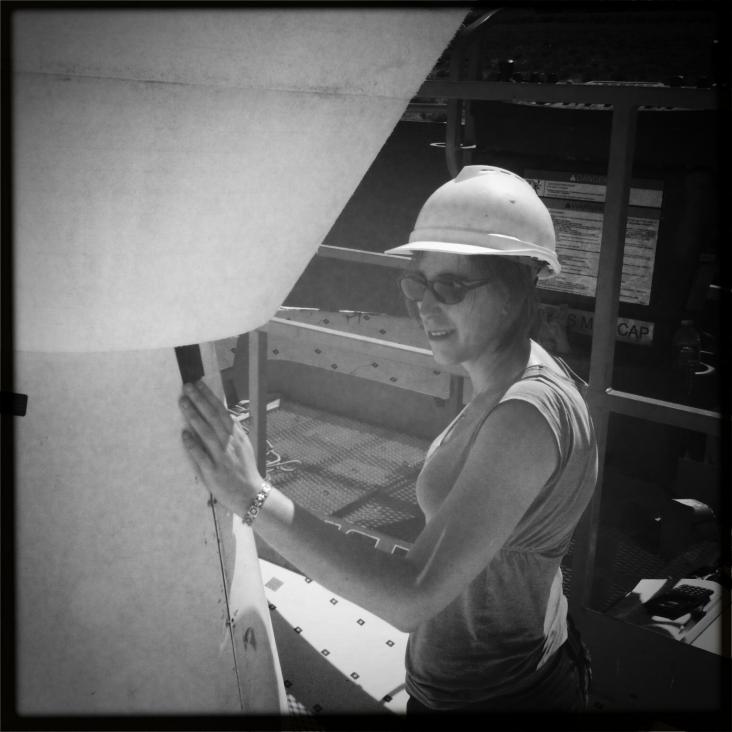The C-Band All-Sky Survey: Instrument design, status, and first-look data
Proceedings of SPIE - The International Society for Optical Engineering 7741 (2010)
Abstract:
The C-Band All-Sky Survey (C-BASS) aims to produce sensitive, all-sky maps of diffuse Galactic emission at 5 GHz in total intensity and linear polarization. These maps will be used (with other surveys) to separate the several astrophysical components contributing to microwave emission, and in particular will allow an accurate map of synchrotron emission to be produced for the subtraction of foregrounds from measurements of the polarized Cosmic Microwave Background. We describe the design of the analog instrument, the optics of our 6.1 m dish at the Owens Valley Radio Observatory, the status of observations, and first-look data. © 2010 SPIE.The C-Band All-Sky Survey: Instrument design, status, and first-look data
ArXiv 1008.4082 (2010)
Abstract:
The C-Band All-Sky Survey (C-BASS) aims to produce sensitive, all-sky maps of diffuse Galactic emission at 5 GHz in total intensity and linear polarization. These maps will be used (with other surveys) to separate the several astrophysical components contributing to microwave emission, and in particular will allow an accurate map of synchrotron emission to be produced for the subtraction of foregrounds from measurements of the polarized Cosmic Microwave Background. We describe the design of the analog instrument, the optics of our 6.1 m dish at the Owens Valley Radio Observatory, the status of observations, and first-look data.A 33 GHz VSA survey of the Galactic plane from 27 to 46 degrees
Monthly Notices of the Royal Astronomical Society Oxford University Press (OUP) (2010)
Abstract:
The Very Small Array (VSA) has been used to survey the l = 27 to 46 deg, |b|<4 deg region of the Galactic plane at a resolution of 13 arcmin. The survey consists of 44 pointings of the VSA, each with a r.m.s. sensitivity of ~90 mJy/beam. These data are combined in a mosaic to produce a map of the area. The majority of the sources within the map are HII regions. We investigated anomalous radio emission from the warm dust in 9 HII regions of the survey by making spectra extending from GHz frequencies to the FIR IRAS frequencies. Acillary radio data at 1.4, 2.7, 4.85, 8.35, 10.55, 14.35 and 94 GHz in addition to the 100, 60, 25 and 12 micron IRAS bands were used to construct the spectra. From each spectrum the free-free, thermal dust and anomalous dust emission were determined for each HII region. The mean ratio of 33 GHz anomalous flux density to FIR 100 micron flux density for the 9 selected HII regions was 1.10 +/-0.21x10^(-4). When combined with 6 HII regions previously observed with the VSA and the CBI, the anomalous emission from warm dust in HII regions is detected with a 33 GHz emissivity of 4.65 +/- 0.4 micro K/ (MJy/sr) at 11.5{\sigma}. The anomalous radio emission in HII regions is on average 41+/-10 per cent of the radio continuum at 33 GHz.IR-correlated 31 GHz radio emission from Orion East
Monthly Notices of the Royal Astronomical Society Oxford University Press 407:4 (2010) 2223-2229
Abstract:
Lynds dark cloud LDN1622 represents one of the best examples of anomalous dust emission, possibly originating from small spinning dust grains. We present Cosmic Background Imager (CBI) 31-GHz data of LDN1621, a diffuse dark cloud to the north of LDN1622 in a region known as Orion East. A broken ring-like structure with diameter ≈20 arcmin of diffuse emission is detected at 31 GHz, at ≈20–30 mJy beam−1 with an angular resolution of ≈5 arcmin. The ring-like structure is highly correlated with far-infrared (FIR) emission at 12–100 μm with correlation coefficients of r≈ 0.7–0.8, significant at ∼10σ. The FIR-correlated emission at 31 GHz therefore appears to be mostly due to radiation associated with dust. Multifrequency data are used to place constraints on other components of emission that could be contributing to the 31-GHz flux. An analysis of the GB6 survey maps at 4.85 GHz yields a 3σ upper limit on free–free emission of 7.2 mJy beam−1 (≲30 per cent of the observed flux) at the CBI resolution. The bulk of the 31-GHz flux therefore appears to be mostly due to dust radiation. Aperture photometry, at an angular resolution of 13 arcmin and with an aperture of diameter 30 arcmin, allowed the use of IRAS maps and the Wilkinson Microwave Anisotropy Probe 5-yr W-band map at 93.5 GHz. A single modified blackbody model was fitted to the data to estimate the contribution from thermal dust, which amounts to ∼10 per cent at 31 GHz. In this model, an excess of 1.52 ± 0.66 Jy (2.3σ) is seen at 31 GHz. Correlations with the IRAS 100 μm gave a coupling coefficient of 18.1 ± 4.4 μK (MJy sr−1)−1, consistent with the values found for LDN1622.Infrared-correlated 31-GHz radio emission from Orion East
Monthly Notices of the Royal Astronomical Society Oxford University Press (OUP) 407:4 (2010) 2223-2229


